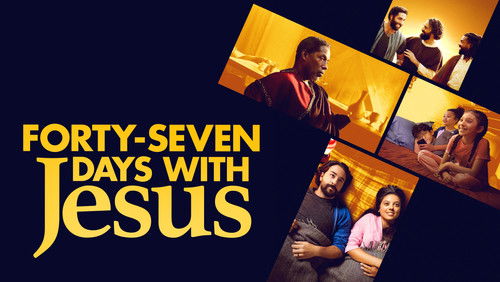Im Zeichen des Kreuzes (1932)
35KIm Zeichen des Kreuzes: Directed by Cecil B. DeMille. With Fredric March, Elissa Landi, Claudette Colbert, Charles Laughton. A Roman soldier becomes torn between his love for a Christian woman and his loyalty to Emperor Nero.
“Let us face facts. As a director of spectacle films, nobody (not even his rival D. W. Griffith in INTOLERANCE) ever touched Cecil Blount De Mille. Although he makes some abominable historic blunders in his films, he does have a habit of tackling historic events that are sometimes ignored. REAP THE WHIRLWIND dealt with the under-discussed problems of the young American republics problems with Caribbean piracy in the 1830s and 1840s. THE BUCCANEER was the first film to deal with the privateer/smuggler Jean Lafitte and Andrew Jacksonu0026#39;s victory at the battle of New Orleans. u003cbr/u003eu003cbr/u003eThat said, his films also have a degree of religiosity that is not to everyoneu0026#39;s taste. This does not mean there is no audience for it today: I imagine that if no audience existed for THE TEN COMMANDMENTS, it would not be shown every Passover. The religious point of view in THE SIGN OF THE CROSS seems quite dated to us in 2005 – but within the last year Mel Gibsonu0026#39;s THE PASSION OF Christ demonstrated that one could make a highly successful (and controversial) movie about Christianityu0026#39;s founding to this day.u003cbr/u003eu003cbr/u003eTHE SIGN OF THE CROSS (1932) is based on a melodramatic play by Wilson Barrett from the 1890s. It describes how a young Roman tribune, Marcus Superbus, finds he is in love with a young Christian, Mercia, and runs afoul of the Emperor Nero and his corrupt wife Poppaea as a result. Nero is starting his persecutions of the Christians, and Poppaea (out of jealousy) is willing to destroy Mercia for stealing the handsome Marcusu0026#39;s attention from her.u003cbr/u003eu003cbr/u003eThe film deals with the persecutions in a way which, for all the the appearance of dated religiosity, happens to be frighteningly effective to this day. This is one movie when the viewer has to ask why does God let bad things happen to good people? Every one of the good people in the film is a Christian. And every one of the Christians ends up martyred by the Roman government, including Mercia, and (in an odd conclusion) Marcus. At the end of the film we (the audience) are left with the apparent triumph of pure evil (Nero, Poppaea, Tigilinus, and the rotten state police, army, and government).u003cbr/u003eu003cbr/u003ePerhaps the most tragic moment of the film is a delayed one. At one point Nerou0026#39;s troops surprise a meeting of the Christians, slaying several, including a mother who brought her young daughter to hear of Jesusu0026#39; ministry. We watch, in several scenes, the survivors of this massacre herded together in cells and in the chambers of the Collesseum, awaiting their doom. They are to be torn to pieces by animals. The little girl has not been told that her mother is dead – she believes the mother is ill or sick somewhere. When the Christians are forced to march into the arena to their deaths, the young girl turns to an old man who has been calming her down and asks where they are going. The old man, inspired by the coming reckoning perhaps, smiles and says, u0026quot;We are going to take you to your mother.u0026quot; He holds the girl by the hand and they go into the arena.u003cbr/u003eu003cbr/u003eMercia, who has been treated harshly (she even is offered to a rapacious lesbian at one point), is sentenced to death by the Emperor as well. Marcus does not have to die, but he argues with her to give up her belief so they both can live. She refuses, because if she does her soul is endangered. Marcus then admits that for all he has heard her say about Jesus and God he cannot understand it, but he believes in Mercia, and if she says it is good he will believe her and share her fate. So he accompanies her – believing Mercia, not believing in Christianity. It is a rather strange theological state of affairs.u003cbr/u003eu003cbr/u003eAs I said, watching this film (among all of DeMilleu0026#39;s movies) it is the bleakest one he ever made. I cannot understand why he did not extend the film. There were cuts and adjustments over the years. Scenes of a Bacchanalia (permissable in pre-code Hollywood in 1932) were trimmed out, as were some horrible samples of deaths in the arena by animals or by humans. In 1943 the film was re-released with a new introduction comparing Nero to Mussolini (not quite the same, although both men were pretty bad leaders). But what impresses me is that if an additional ten or twenty minutes had been added, the fall of Nero and Poppaea and Tigilinus and their rotten regime could have been shown. The film takes place in 65 A.D, shortly after Romeu0026#39;s fire. Nero had set the fire (we are shown him playing a lyre while the city burns), and he blames the Christians as a convenient scapegoat. It works for awhile, but by 68 A.D. nobody cared about this anymore. The year of the u0026quot;five emperorsu0026quot; (Nero – Otho – Galba – Vitellius – Vespasian) took place, where Nero was overthrown (after he murdered Poppaea – supposedly by kicking her when she was pregnant) and his loyal servants were massacred. Nero while dawdling with a sword (he hated committing suicide) was run through by a servant who could not stand the waiting anymore. The other four generals replaced him, until Vespasian (the strongest) came to power.u003cbr/u003eu003cbr/u003eThis could have been condensed (in the film QUO VADIS it was condensed). De Mille decided not to show it. Iu0026#39;m not sure he was wrong to leave out that coda of the destruction of an evil regime. The message of this troubling film seems to be that this earth is for the corrupt, and that only the kingdom of heaven is for the pure and good.”









